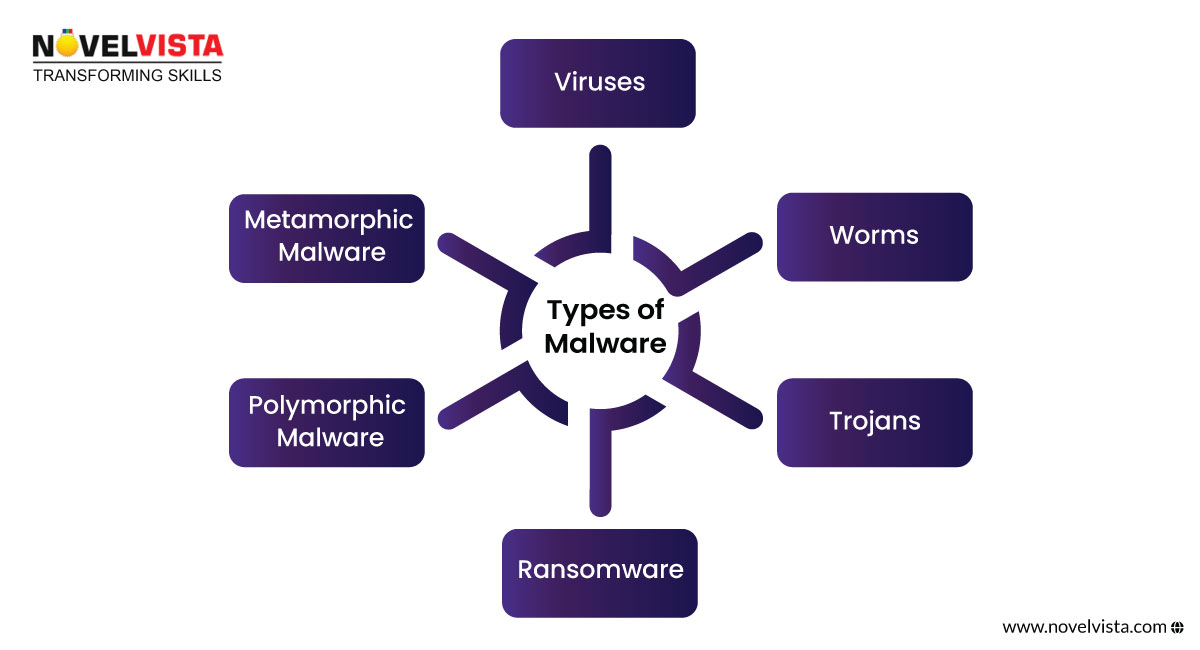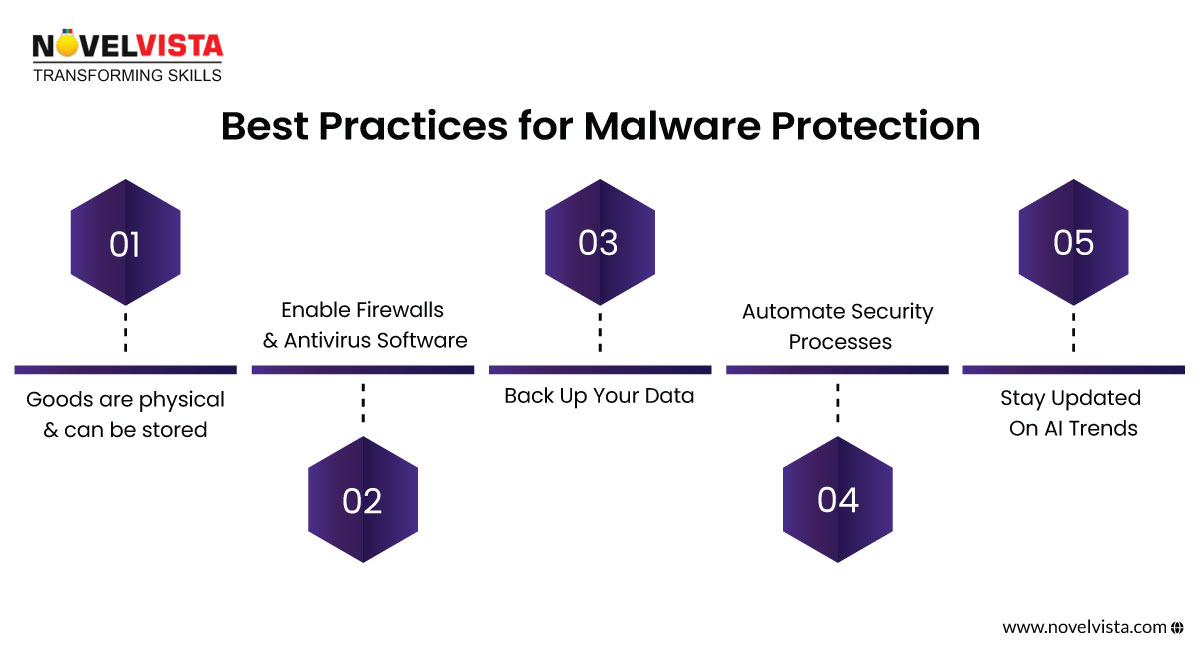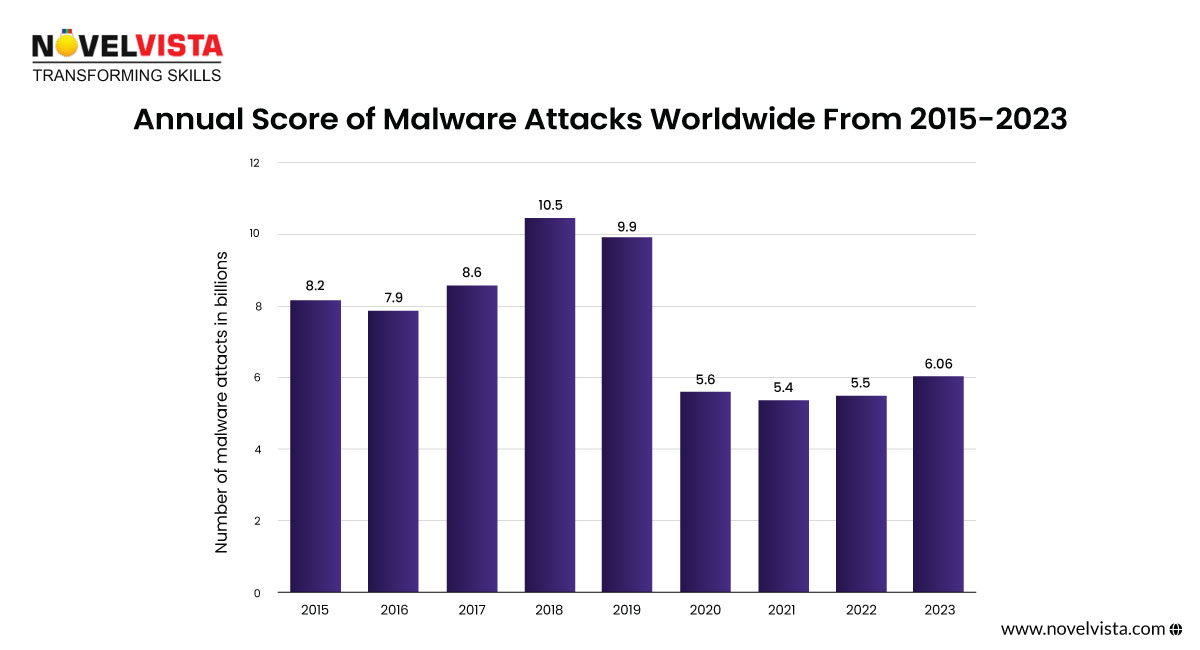Generative AI represents the transformative force for Cybersecurity. It has enough potential to revolutionize security practices while simultaneously elevating the capabilities of malicious actors to unprecedented levels.
The integration of generative AI in cybersecurity is a double-edged sword that has improved the differences and threats. This technology allows the creation of sophisticated malware that can self-evolve and adopt specific targets, posing new challenges for cybersecurity professionals.
In today’s era, where technological advancements are moving at lightning speed, chief security officers need to prepare for the landscape of fluctuation. Make sure to check Generative AI in Cybersecurity Training Course.
Through this blog, we will discuss the overall potential of generative AI in creating dynamic defense mechanisms against evolving malware threats.
Generative AIis the branch of Artificial Intelligence that creates new data or content based on existing data or content. The strong use of Gen AI is both a boon and a bone. As it learns and generates content by itself, it can pose noteworthy trials in cybersecurity.
This ground-breaking technology brings the potential to revolutionize malware defense defense strategies, providing a proactive method to identify and reduce cyber threats. Must explore theGenerative AI In Cybersecurityto get more details.
Generative AI is a remarkable technology that can independently produce highly authentic content across different areas, like text, images, audio, and video. Recent forecasts indicate that the market size of Generative AI in the security sector is expected to grow significantly from $533 million in 2022 to around $2,654 million by 2032. This represents an impressive compound annual growth rate of 17.9% during the 2023 to 2032 period.
Generative AI helps spot dangers quickly. Language models process lots of data at once. They identify threats faster than people can. This gives cybersecurity teams an edge. Generative AI spots patterns from threats and strange behaviors.
It monitors networks and users for issues. Everything runs smoothly with internal staff and external forces. Generative AI also predicts threats before any damage happens. It uses analytics to foresee problems.
Crimes on the web are common, so preparedness is key when they strikes. Ransomware assaults have risen immensely since COVID-19's outbreak. Studies reveal ransomware attacks soared 40% in 2020, while IoT (Internet of Things) malware climbed 30%. Generative AI readies us by mimicking attacks.
Generative AI for cybersecurity is a novel field with potential, yet vulnerabilities remain before it becomes fully reliable. Cybersecurity professionals must train it to handle specific threats. Many face issues: AI biases or data limitations hinder its effectiveness.
Innovative tech benefits those who can pay. ChatGPT is free online, but robust generative AI for cybersecurity is costly.
For instance, Latitude spent over $200,000 monthly on AI software and AWS in 2021. Small businesses and startups may struggle with these high costs.
AI that makes stuff is getting big with workers and regular folks.
This new tech fits for cybersecurity because it guards nonstop and spots threats fast. But ethical worries and steep costs might leave many behind. A smart move for companies is weighing the good and bad before choosing whether AI that makes stuff is a go.
Good individuals who are interested in Cybersecurity and creating protective mechanisms employ these techniques. 76% of businesses have already given AI and machine learning a top priority in their IT expenditures, according to Forbes. Make sure to checkGen AI’s trends in Cybersecurity.
Among the applications of AI in cybersecurity procedures are the following:
Once you enroll forGenerative AI Professional Certification Courseyou will understand all of this information.
Gen AI can be used to generate the script and virtual scenarios, which identify network animals and detect vulnerabilities. Businesses can make informed decisions on enhancing the security at their premises.
Artificial Intelligence can be used to combat AI-generated attacks. Businesses can take advantage of this technology by adopting generative AI tools and solutions that are aligned with their specific requirements and challenges.
They can also utilize the knowledge and guidance provided by reliable partners and vendors with extensive experience in developing generative AI specifically tailored for cybersecurity purposes.
Generation AI, often called Gen AI, refers to the latest group of people who have grown up immersed in advanced technology and artificial intelligence (AI).
In the field of cybersecurity, Gen AI plays a vital role in reducing threats and protecting digital assets through various innovative methods.
Gen AI is highly skilled in analyzing user behavior and system operations. By closely monitoring how people interact with the system, the network traffic, and various activities, Gen AI algorithms can detect unusual behaviors that might suggest unauthorized access, malware, or internal threats. This allows for prompt action to address any issues that arise.
Gen AI leverages automated and coordinated capabilities to streamline cybersecurity operations. This enables a rapid response to security incidents and vulnerabilities. Automated incident response mechanisms powered by Gen AI can quickly isolate compromised systems, mitigate threats, and initiate remediation. This helps reduce the risk of potential damage and data breaches.
Gen AI incorporates threat intelligence from a variety of sources, including cybersecurity forums, dark web monitoring, and threat intelligence platforms. This comprehensive threat information allows Gen AI to better identify and address emerging security risks.
The AI technology enables the implementation of dynamic security measures that adjust to evolving cyber threats and attack methods. By continuously monitoring and analyzing the threat landscape, the AI algorithms can automatically reconfigure security controls, update access policies, and fix vulnerabilities in real-time. This ensures the system's resilience against emerging cyber risks.
The AI also promotes user awareness and education. It develops interactive training modules, simulated cyberattack scenarios, and engaging learning experiences. By imparting cybersecurity knowledge and best practices to people from a young age, the AI fosters a culture of cyber resilience and empowers individuals to proactively recognize and mitigate potential threats.
In today's ever-evolving digital landscape, artificial intelligence (AI) has emerged as a powerful tool in the fight against cyber threats. By leveraging its advanced analytical capabilities, AI can help organizations strengthen their cybersecurity defenses. It can detect anomalies, identify vulnerabilities, and proactively mitigate potential risks to safeguard digital assets.
As AI technology continues to evolve, its role in shaping the future of cybersecurity will become increasingly essential. By harnessing the innovative potential of AI, companies can bolster their overall cybersecurity posture and stay one step ahead of emerging cyber threats.
Let's not ignore it - malware is everywhere. Cybercriminals always try to sneak into your system through infected downloads to phishing emails. If you think a regular antivirus is sufficient, you must think again. Current malware is sneaky, intelligent, and ever-evolving.
So, how do you not fall behind? The solution is all about malware strategies driven by automatic cybersecurity, AI-based risk detection, and deep learning for threat protection. Let's understand this.
Not all malware is the same. Some are annoying, while others can shut down entire businesses. Here’s a quick list of the most dangerous ones:

Cybercriminals are getting smarter, but so are we. Thanks to AI-powered malware analysis, security systems can detect and stop malware before it moves.
You don’t need to be a cybersecurity expert to avoid malware. Here are some simple but powerful ways to stay protected:
These steps might seem basic, but most malware infections happen because people ignore them.
If you want to go beyond the basics, here are some advanced techniques to keep malware far away from your system:
Cybersecurity isn’t just about reacting to threats—it’s about stopping them before they happen. Want to explore AI-powered security in greater depth? Check outGenerative AI in Cybersecurityto see howArtificial Intelligencetransforms cyber defense.
Even with all the AI and automation, you still need good security habits. Here’s what you should be doing:

Curious about where AI is headed next? Check outGenerative AI TrendsandGenerative AI's role in ITSMto stay informed.
According to the report, in 2024, malware attacks reached a staggering 5.6 billion globally. To put it in perspective, 2018 witnessed the highest number of malware attacks in recent years, with a colossal 10.5 billion incidents worldwide. It's a stark reminder of the ever-evolving cybersecurity challenges we face.

The integration of Generative AI (Gen AI) into cybersecurity represents a significant shift in the fight against cyber threats. While it has enormous potential to revolutionize security practices, it also brings new challenges and risks. However, with proper implementation and strategic use, Gen AI can significantly boost cybersecurity defenses and reduce emerging threats.
By using behavior analysis, automation, threat intelligence integration, adaptive security measures, and user education,Certification in Generative AIallows cybersecurity experts to stay ahead of cybercriminals. Its ability to detect unusual activity, automate repetitive tasks, integrate diverse threat data, adapt to evolving threats, and educate users empowers organizations to build strong defenses against cyber attacks.
Cyber threats aren’t slowing down, and traditional security measures aren’t enough. The future belongs to AI-powered malware analysis, cybersecurity automation, and adaptive security with AI.
If you want to stay ahead of cybercriminals, you must embrace AI-driven threat detection and deep learning for threat prevention. For this, you must have anIntroduction to generative AI.
Want to boost your cybersecurity skills? Check out the Generative AI Certification Course and start learning today withNovelVista!
Malware Never Knocks- It Just Breaks In! Lock your digital doors before it's too late